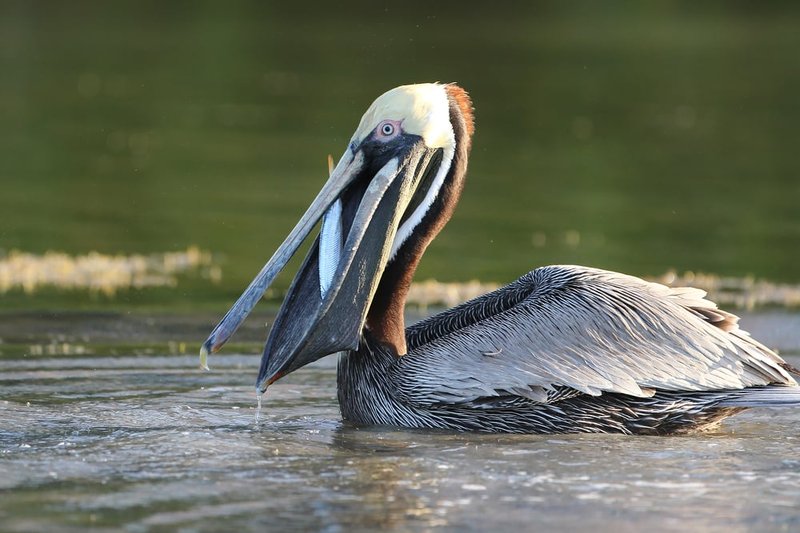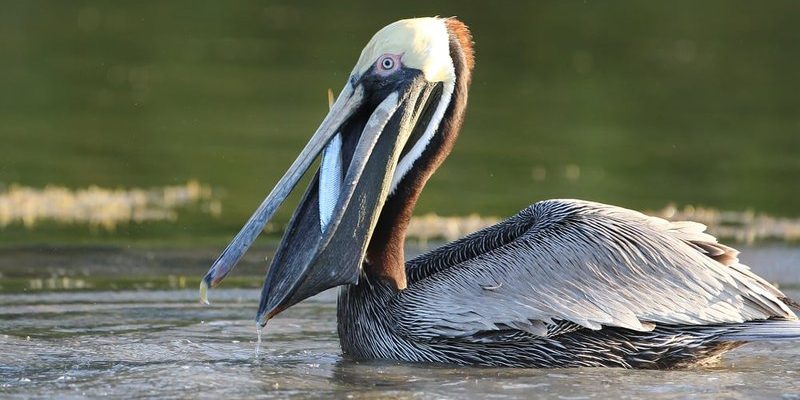
Pelicans primarily feast on fish, but their diet isn’t limited to just one type. They have a knack for foraging, and it’s a skill honed by nature. Understanding what pelicans eat and how they catch their food gives us a glimpse into their world and the ecosystems they inhabit. So, let’s dive into the sea of knowledge about pelican diets and hunting strategies.
The Pelican’s Diet: More Than Just Fish
You might imagine pelicans as fish connoisseurs, but their diet is quite diverse. While fish are indeed their primary source of food, they also enjoy a variety of other aquatic creatures. Here’s a quick rundown of what these birds might munch on:
- Fish: Pelicans are expert fishers, targeting species like sardines, herring, and more.
- Crustaceans: They occasionally snack on shrimp and crabs, especially when fish are scarce.
- Amphibians: Pelicans might even eat frogs or young turtles if they’re hungry enough.
What’s fascinating is how pelicans adapt their diet based on their environment. In areas where one type of fish is abundant, they may focus solely on that, while in other regions, they’ll diversify their meals. This adaptability helps them thrive in various habitats, from coastal waters to inland lakes.
How Pelicans Hunt: The Art of Fishing
When it comes to hunting, pelicans have a few tricks up their sleeves, or rather, in their beaks. The hunting technique of a pelican is both an art and a science. They often hunt in groups, which makes them more effective. Picture a group of them working as a team – it’s like watching a well-rehearsed dance!
One common method is called pursuit diving. Pelicans will spot schools of fish from above, then plunge into the water headfirst. Their large bills are designed to scoop up fish and drain excess water. Here’s how it usually goes:
1. Soaring Above: Pelicans use their keen eyesight to locate fish while they fly high.
2. Diving In: With a swift motion, they dive headfirst into the water.
3. Scooping Up: As they submerge, their bill opens wide, capturing fish in the net-like pouch.
Watching this in action is truly something special! Their coordinated dives not only increase their success rate but also keep other birds at bay.
Foraging Techniques: Patience is Key
When pursuit diving isn’t possible, pelicans switch to foraging. This method requires a lot of patience. Imagine sitting still, waiting for the right moment, like a bird version of fishing with a pole. Pelicans will often wade in shallow waters, using their keen sense of sight to locate hidden fish.
They may also forage in shallow lagoons or marshes where fish are easier to catch. During this time, they’ll move slowly, dipping their bills into the water and feeling for fish that are nearby. Here’s what you might see:
– Wading: Pelicans are often seen walking slowly through the water, scanning below for movement.
– Bill Dipping: They use their bills to gently stir the water and catch any fish that may be hiding.
– Team Foraging: Sometimes, they gather in groups and take turns diving, increasing their chances of a good catch.
These strategies show how pelicans are not just skilled hunters but also smart foragers.
Feeding Habits and Strategies
So, what happens once a pelican catches its prey? The feeding process is just as impressive as the hunt. After scooping up fish, pelicans will drain the water from their bills before swallowing their meal whole. Their bills act like a net, keeping the food securely in place. It’s fascinating how they can take in large quantities of fish, sometimes swallowing multiple small ones at a time!
Pelicans also have a social aspect to their feeding. You might notice them sharing their catch with their young or even competing with each other. This competition can be fierce, especially in places where food is limited. In these situations, larger, stronger pelicans often dominate the feeding spots, showcasing nature’s competitive spirit.
Seasonal Changes in Diet
Pelicans adapt their diets based on seasonal changes and availability. During warmer months, fish are usually more abundant, allowing pelicans to feast. However, as seasons change, they might have to look for alternative food sources. It’s a classic case of survival of the fittest.
In some regions, pelicans migrate in search of food as seasons change. They might venture from coastal waters to freshwater lakes, adapting their hunting methods based on where they find themselves. This fluidity in their feeding habits is a testament to their resilience.
Environmental Impact on Feeding
The health of aquatic ecosystems directly affects pelican diets. Pollution, overfishing, and climate change can all disrupt their food sources. If fish populations decline, pelicans are forced to travel further or compete harder for meals. This environmental connection showcases how interconnected life can be.
Conservation efforts are essential to ensure that pelicans have a sustainable food source. Protecting their habitats not only benefits them but the entire ecosystem. Healthy waterways mean thriving fish populations, which in turn support the pelican population.
Pelicans are remarkable birds with fascinating eating habits and hunting techniques. From their diverse diet of fish and crustaceans to their impressive hunting strategies, they showcase nature’s beauty and adaptability. Watching these birds in action is a reminder of the intricate relationships within ecosystems and the importance of preserving those environments.
So, next time you see a pelican swoop down to catch its meal, remember the dance it performs, the skills it showcases, and the delicate balance of nature that allows it to thrive. They’re not just birds; they’re vital players in the aquatic world, reminding us of the wonders of wildlife.

